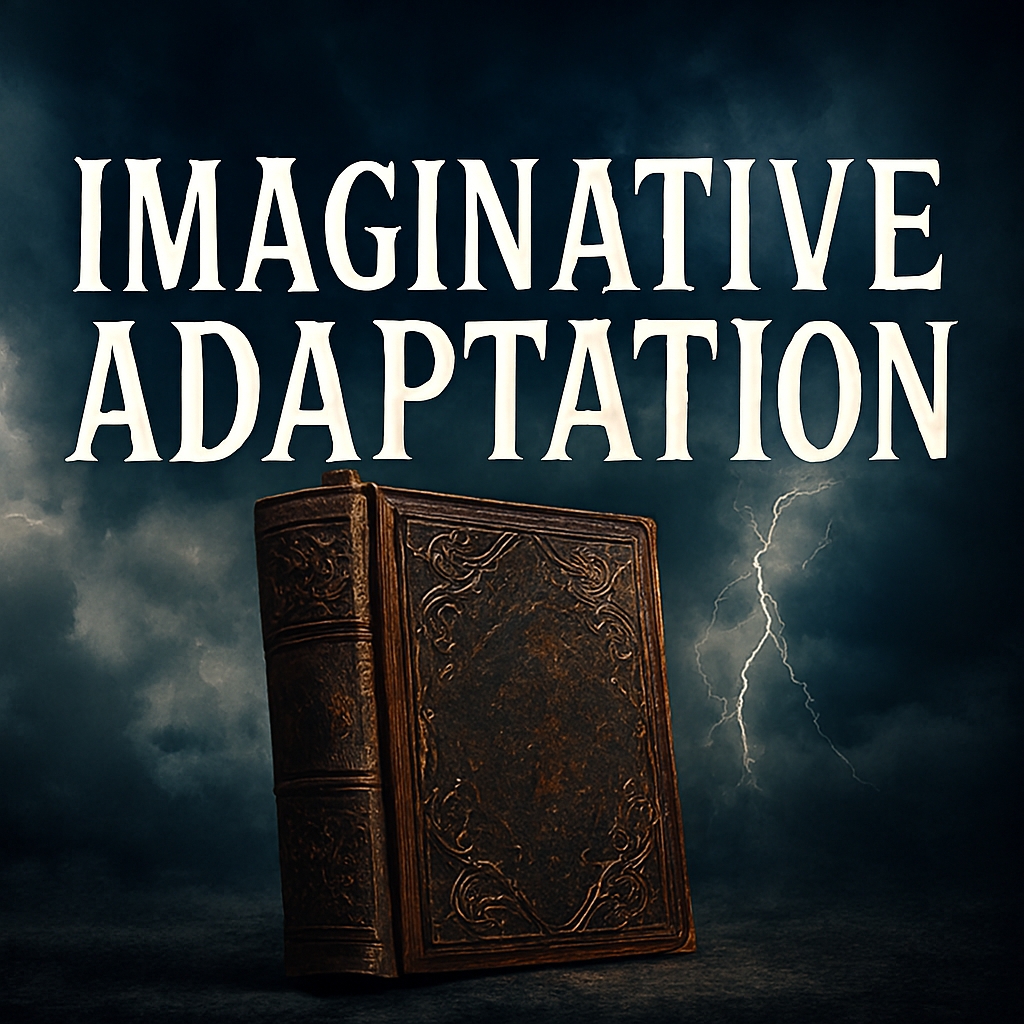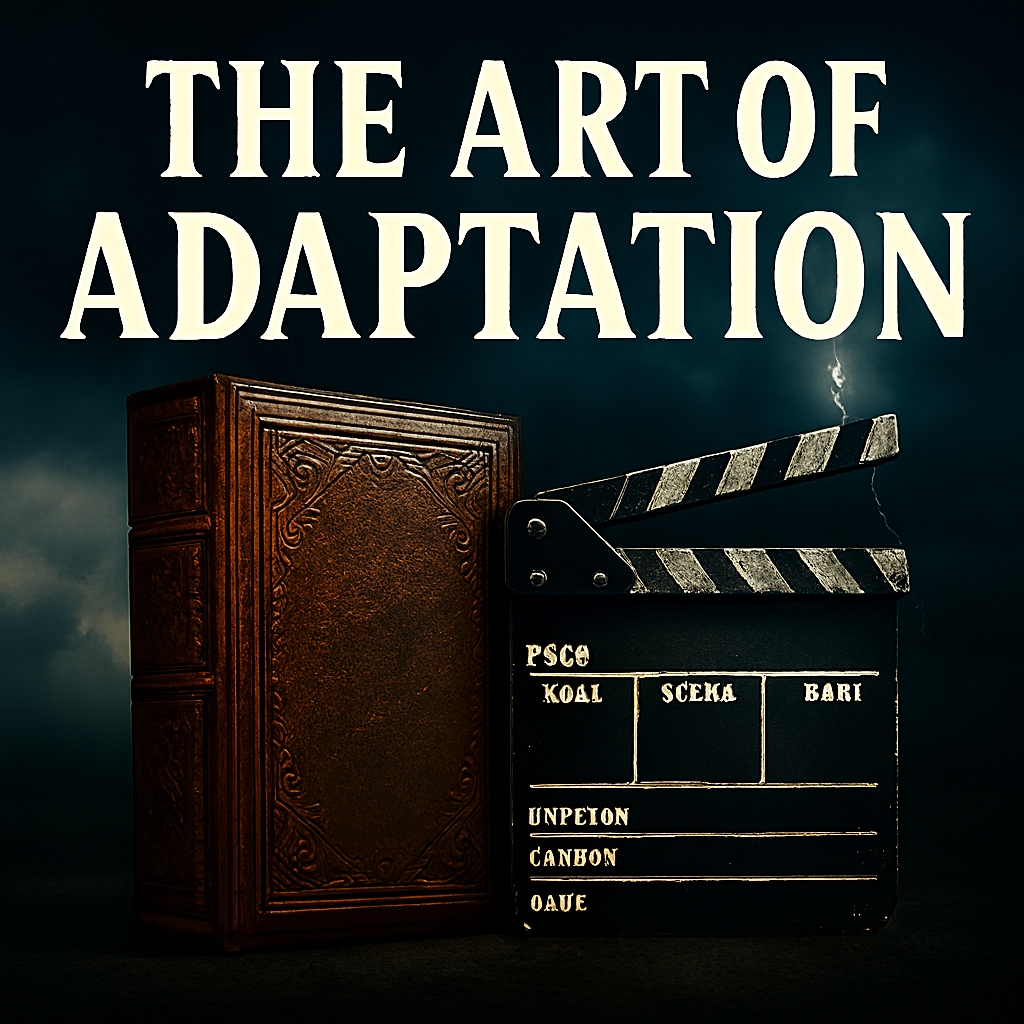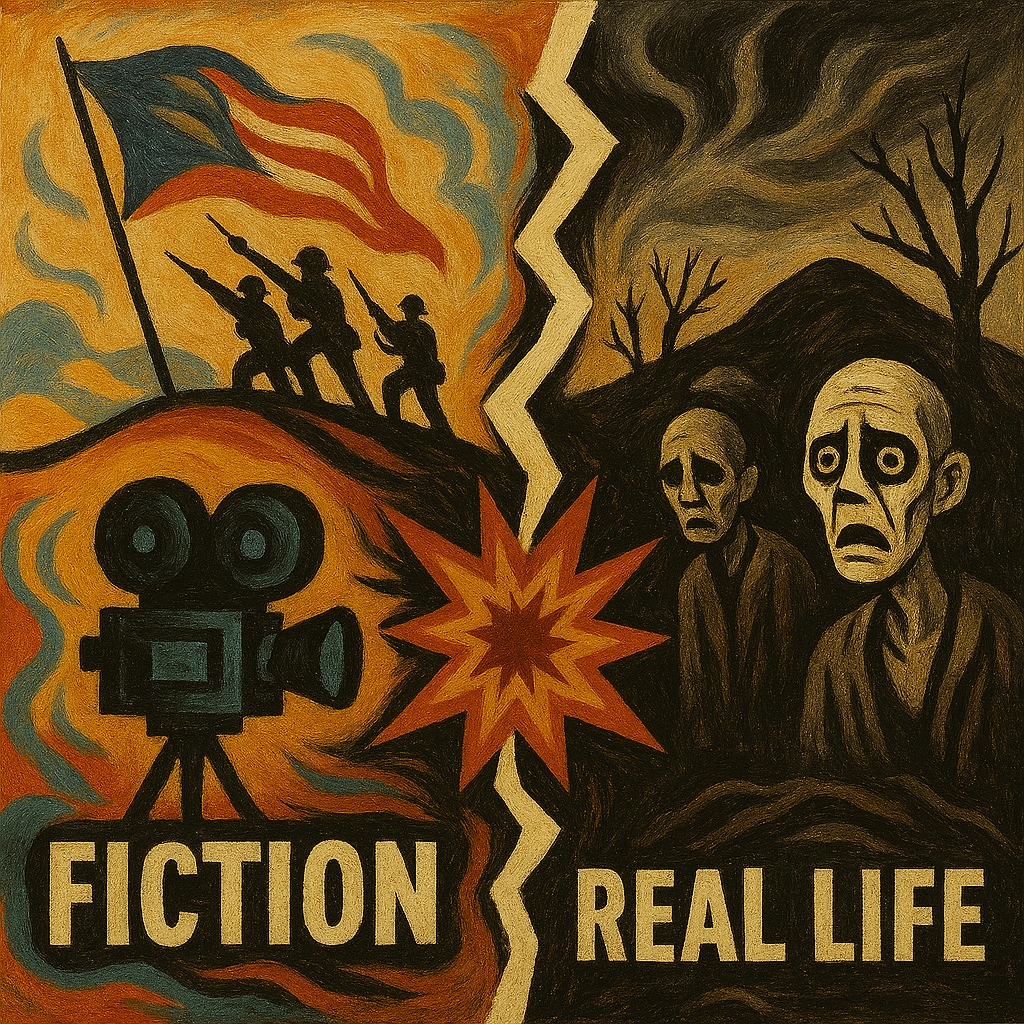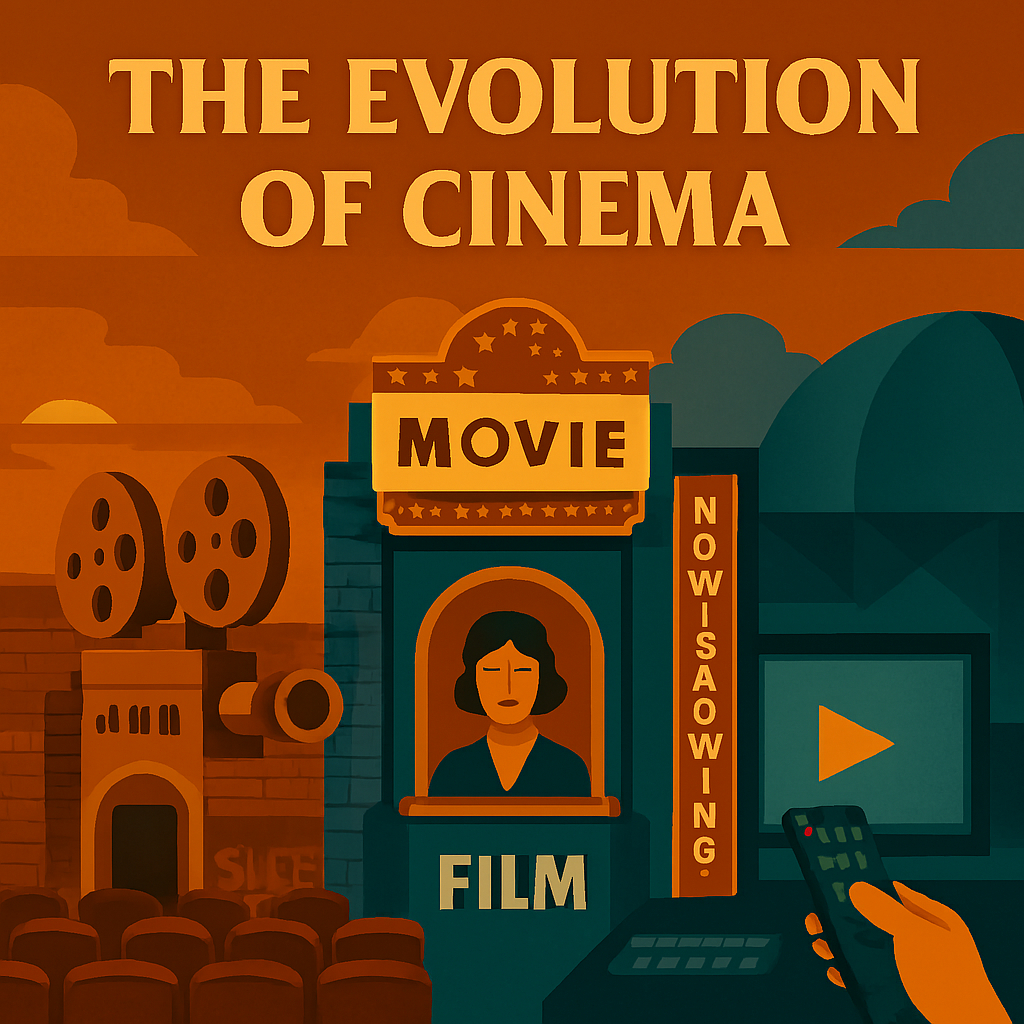Why Book Adaptations For Movies And TV Shows Can Change And Why Sometimes They Need To And Sometimes They Just Do Not
Book Adaptations – Translating Stories From Page To Screen
Adapting a book into a movie or television show is not a matter of simple replication. It is a creative negotiation between two fundamentally different mediums, each with its own strengths, limitations, and storytelling logic. Novels offer internal monologue, layered exposition, and slow emotional build-up, while screen formats demand visual immediacy, rhythmic pacing, and externalized conflict. This shift often requires structural changes, character consolidation, and thematic recalibration. Some adaptations remain loyal to the source material, preserving its tone and narrative architecture. Others diverge dramatically, reshaping the story to suit cinematic or episodic demands. These decisions are influenced by time constraints, audience expectations, cultural relevance, and production logistics. Adaptations must also consider genre conventions, casting implications, and symbolic translation. What works in prose may falter on screen without careful reimagining.

Narrative Compression – Condensing Storylines Without Losing Meaning
Books often span hundreds of pages, weaving intricate plots and subplots that unfold gradually. Films, constrained by runtime, must distill these narratives into a compact format that retains emotional and thematic coherence. Television offers more flexibility but still requires episodic tension and pacing discipline. Adaptations frequently eliminate secondary arcs, merge timelines, and accelerate character development. These changes can sharpen focus but risk flattening nuance. The challenge lies in preserving the story’s emotional truth while trimming excess. Compression is not inherently reductive—it can clarify the core message. However, careless cuts can undermine character motivation and thematic depth. Successful compression requires strategic storytelling, not mechanical editing. It is a craft of distillation, not deletion.
Table – Common Compression Techniques In Adaptation
| Technique | Purpose | Risk |
|---|---|---|
| Timeline Acceleration | Speeds up events for pacing | Loss of buildup and tension |
| Character Merging | Reduces cast size for clarity | Erasure of unique perspectives |
| Scene Elimination | Removes non-essential moments | Weakening of atmosphere or symbolism |
| Visual Substitution | Replaces prose with imagery | Oversimplification of complex ideas |
| Voiceover Narration | Retains internal monologue | Can feel intrusive or overused |
Character Consolidation – Merging Roles To Streamline Narrative
Books often feature expansive casts with interwoven relationships and distinct arcs. On screen, too many characters can overwhelm viewers or dilute emotional focus. Adaptations frequently consolidate roles, combining traits and functions to simplify storytelling. This can enhance narrative clarity and strengthen thematic contrast. However, it may also erase important cultural, psychological, or symbolic dimensions. The loss of a character’s voice can shift the story’s moral center or emotional tone. Consolidation must be guided by narrative logic, not convenience. When done well, it creates dynamic composite characters that serve the story’s core. When done poorly, it flattens complexity and undermines representation. The decision must be rooted in thematic integrity and audience literacy.
Table – Character Consolidation Outcomes
| Outcome | Benefit | Risk |
|---|---|---|
| Enhanced Focus | Streamlined emotional arc | Loss of diversity and nuance |
| Stronger Performances | More screen time for lead actors | Overshadowed subplots |
| Simplified Relationships | Easier audience comprehension | Flattened interpersonal dynamics |
| Thematic Clarity | Sharper moral or symbolic contrast | Reduced ambiguity |
| Budget Efficiency | Fewer actors and scenes | Artistic compromise |
Visual Language – Reimagining Prose As Cinematic Imagery
Books rely on language to evoke mood, setting, and emotion. Films and TV shows must use visuals, sound, and performance to achieve the same effect. This shift demands creative reinterpretation of descriptive passages and symbolic motifs. A single sentence in a novel might require an entire scene on screen. Visual storytelling can amplify impact but also limits internal reflection. Directors must find ways to externalize inner conflict through framing, lighting, and performance. Symbolism becomes visual rather than verbal. The challenge is to preserve emotional resonance while embracing cinematic grammar. Some adaptations invent new visual metaphors that echo the original. Others simplify or omit symbolic layers, risking thematic dilution.
Table – Visual Translation Strategies
| Strategy | Description | Example |
|---|---|---|
| Symbolic Framing | Using visual motifs to echo themes | Mirrors in psychological drama |
| Lighting Contrast | Conveying mood through brightness and shadow | Noir adaptations |
| Costume Signaling | Character traits expressed through wardrobe | Period dramas |
| Set Design Metaphor | Environment reflects internal states | Gothic horror |
| Cinematic Pacing | Editing rhythm matches emotional tone | Romantic adaptations |
Audience Expectations – Navigating Loyalty And Accessibility
Adaptations must balance the expectations of loyal readers with the needs of new viewers. Staying too close to the source can alienate those unfamiliar with its structure or tone. Straying too far can betray the emotional investment of longtime fans. The best adaptations build bridges between audiences, honoring the spirit of the book while crafting a compelling screen experience. This requires empathy, not just technical skill. Understanding what readers love—and why—is crucial. So is knowing how to translate that love into a different medium. Adaptations must also anticipate cultural shifts and generational differences. What resonated in print may require recalibration for screen. The goal is not replication but resonance.
Table – Audience Expectation Dynamics
| Audience Type | Expectation | Adaptation Strategy |
|---|---|---|
| Book Purists | Fidelity to plot and character | Faithful adaptation |
| Casual Viewers | Emotional clarity and pacing | Streamlined narrative |
| Genre Fans | Familiar tropes and tone | Genre alignment |
| Critics | Artistic coherence and innovation | Bold reinterpretation |
| International Audiences | Cultural accessibility and resonance | Localization and casting |
Cultural Reframing – Updating Themes For Contemporary Resonance
Books are often products of their time, reflecting the social norms, political tensions, and cultural assumptions of their era. When adapted for modern audiences, these elements may require reframing to maintain relevance and avoid alienation. This can involve reinterpreting gender roles, racial dynamics, or ideological subtext. Such changes are not about erasure—they are about engagement. Adaptations must ask what the story means now, not just what it meant then. Updating context can revitalize old narratives, making them speak to new generations. It can also challenge viewers to reconsider inherited assumptions. However, cultural reframing must be done with care, avoiding tokenism or superficial revision. The goal is to deepen resonance, not dilute complexity. When successful, it transforms adaptation into cultural dialogue.
Table – Cultural Reframing Strategies
| Strategy | Purpose | Risk |
|---|---|---|
| Gender Role Revision | Reflects modern gender dynamics | May provoke backlash from purists |
| Racial Recasting | Expands representation | Risk of performative diversity |
| Political Recontextualization | Aligns with current discourse | Overshadowing original themes |
| Language Modernization | Improves accessibility | Loss of historical texture |
| Symbolic Reinterpretation | Updates metaphors for new audiences | Misalignment with original tone |
Medium Logic – Respecting Format Constraints
Each storytelling medium has its own logic. Novels allow for introspection, layered exposition, and nonlinear structure. Films require visual immediacy, rhythmic pacing, and externalized conflict. Television offers episodic depth but demands cliffhangers, arcs, and serialized tension. Adaptations must respect these constraints to succeed. A faithful translation may fail if it ignores the grammar of the new format. Successful adaptations reimagine structure without losing essence. They treat format as a creative opportunity, not a limitation. Constraints can inspire innovation, forcing storytellers to find new ways to express old truths. Understanding medium logic is essential to adaptation success. It is the foundation upon which all other decisions rest.
Table – Medium Constraints And Opportunities
| Medium | Constraint | Opportunity |
|---|---|---|
| Novel | Slow pacing, internal monologue | Deep psychological insight |
| Film | Limited runtime, visual focus | High-impact storytelling |
| Television | Episodic structure, cliffhanger rhythm | Long-form character development |
| Streaming Series | Bingeable arcs, flexible length | Narrative experimentation |
| Stage Adaptation | Physical limitations, live performance | Intimate audience engagement |
Symbolic Translation – Reimagining Metaphors For Screen
Books often rely on symbolic language to convey emotional and thematic depth. These symbols must be reimagined for screen, where visual cues replace verbal ones. A recurring motif in prose may become a visual pattern, a costume detail, or a set design element. This translation is not literal—it is interpretive. The challenge lies in preserving emotional resonance while embracing cinematic grammar. Some adaptations invent new symbols that echo the original. Others simplify or omit symbolic layers, risking thematic dilution. Symbolic translation requires sensitivity to both mediums. It is not about replication—it is about emotional fidelity. When done well, it creates a new symbolic language that honors the original. When done poorly, it flattens meaning into aesthetic decoration.
Table – Symbolic Translation Examples
| Book Symbol | Screen Equivalent | Emotional Function |
|---|---|---|
| Recurring Object | Visual motif (e.g., necklace, book) | Anchors memory or identity |
| Weather Patterns | Lighting and sound design | Reflects mood or tension |
| Internal Monologue | Framing and camera movement | Reveals psychological state |
| Literary Allusion | Set design or dialogue reference | Adds thematic depth |
| Color Symbolism | Costume and palette choices | Signals transformation or conflict |
Casting Impact – Embodying Characters With Symbolic Weight
Casting is not just a logistical decision—it is a symbolic act. The actor becomes the embodiment of the character, shaping audience perception and emotional engagement. Changes in race, gender, age, or physicality can reframe the story’s meaning. These choices reflect cultural priorities, creative vision, and representational ethics. Casting can expand inclusivity or provoke backlash. It can deepen resonance or disrupt continuity. The key is intentionality. Casting must serve the story’s emotional and thematic goals, not just marketing or trend. Performance can elevate or undermine narrative depth. The actor’s presence becomes part of the story’s symbolic architecture. Casting is not mimicry—it is embodiment.
Table – Casting Choices And Their Effects
| Casting Decision | Symbolic Impact | Audience Reaction |
|---|---|---|
| Race Recasting | Challenges norms, expands representation | Mixed—depends on context |
| Gender Swapping | Reframes power dynamics | Can provoke debate |
| Age Adjustment | Alters maturity or vulnerability | May shift tone |
| Physicality Shift | Changes character perception | Affects believability |
| Star Power Inclusion | Boosts visibility, alters expectations | Risk of overshadowing story |
Genre Reorientation – Shifting Tone To Fit Format
Books often blend genres in subtle ways, weaving mystery into drama or fantasy into allegory. Adaptations may emphasize one genre over others to suit format, audience, or marketing strategy. A literary mystery may become a thriller. A philosophical novel may become a drama. These shifts affect tone, pacing, and audience expectation. Genre reorientation is strategic but risky. It can attract new viewers or alienate core fans. The key is to preserve thematic integrity. Genre is a lens, not a cage. Adaptations must choose their lens wisely. The goal is not simplification—it is resonance.
Table – Genre Reorientation Examples
| Original Genre | Adapted Genre | Reason For Shift |
|---|---|---|
| Literary Fiction | Psychological Drama | Emphasizes emotional depth |
| Historical Novel | Political Thriller | Adds urgency and relevance |
| Fantasy Epic | Action Adventure | Enhances visual spectacle |
| Philosophical Allegory | Character-Driven Drama | Focuses on internal conflict |
| Satirical Comedy | Dark Comedy | Aligns with contemporary tone |
Plot Restructuring – Reordering Events For Dramatic Effect
Books often unfold in nonlinear fashion, using flashbacks, nested narratives, or fragmented chronology. Screen adaptations may restructure these events to enhance clarity, tension, or emotional payoff. This can involve reordering scenes, introducing new framing devices, or collapsing timelines. Plot restructuring is not about distortion—it is about rhythm. The goal is to create a compelling arc that resonates visually and emotionally. Some adaptations use parallel editing to mirror themes. Others employ chronological simplification to aid comprehension. The challenge is to preserve causality and character motivation. Restructuring must serve story, not spectacle. When done well, it enhances narrative flow. When done poorly, it confuses or trivializes.
Table – Plot Restructuring Techniques
| Technique | Purpose | Risk |
|---|---|---|
| Chronological Simplification | Improves clarity | Loss of mystery or depth |
| Flashback Integration | Adds emotional layering | Can disrupt pacing |
| Parallel Editing | Mirrors thematic contrasts | Requires careful execution |
| Framing Device Addition | Creates narrative anchor | May feel artificial |
| Timeline Collapsing | Speeds up development | Risk of character inconsistency |

Dialogue Adaptation – Rewriting Speech For Screen Rhythm
Book dialogue often reflects internal thought, literary style, or period-specific diction. Screen dialogue must be concise, rhythmic, and emotionally immediate. Adaptations frequently rewrite speech to suit character voice, pacing, and audience accessibility. This can involve modernizing language, simplifying exposition, or adding subtext. Dialogue adaptation is not just translation—it is transformation. The goal is to preserve character essence while enhancing screen presence. Some adaptations retain iconic lines verbatim. Others rework speech to fit visual rhythm. The challenge is to balance fidelity with fluency. Dialogue must feel authentic, not overwritten. It is the heartbeat of screen storytelling.
Table – Dialogue Adaptation Strategies
| Strategy | Purpose | Example |
|---|---|---|
| Language Modernization | Improves accessibility | Updating archaic phrasing |
| Subtext Enhancement | Adds emotional complexity | Implied tension in short exchanges |
| Exposition Reduction | Speeds up pacing | Visual cues replace verbal explanation |
| Iconic Line Retention | Honors source material | Famous quotes preserved |
| Character Voice Refinement | Deepens personality | Tailored speech patterns |
Emotional Calibration – Adjusting Tone For Screen Impact
Books often explore emotion through internal reflection, layered prose, and gradual revelation. Screen adaptations must externalize these feelings through performance, music, and visual rhythm. This shift demands emotional calibration—adjusting tone to suit the immediacy of the medium. A subtle sadness in prose may become a dramatic breakdown on screen. A quiet moment of realization may require visual metaphor or musical cue. The goal is not exaggeration but translation. Emotional truth must be preserved, even if its expression changes. Adaptations must consider audience sensitivity, genre expectations, and cultural norms. Calibration is not dilution—it is alignment. When done well, it deepens connection. When mishandled, it feels manipulative or hollow.
Table – Emotional Calibration Techniques
| Technique | Purpose | Risk |
|---|---|---|
| Musical Underscoring | Enhances mood and emotional cues | Can feel intrusive or overbearing |
| Performance Amplification | Externalizes internal conflict | Risk of melodrama |
| Visual Symbolism | Represents abstract emotion | May confuse or distract |
| Pacing Adjustment | Matches emotional rhythm | Can disrupt narrative flow |
| Silence Utilization | Creates space for reflection | May be misread as emptiness |
Structural Reimagining – Rebuilding Narrative Architecture
Some adaptations go beyond compression or reordering—they rebuild the story’s structure entirely. This can involve changing the point of view, introducing new framing devices, or altering the ending. Structural reimagining is bold and often controversial. It reflects a desire to reinterpret, not just retell. These changes may arise from thematic emphasis, cultural reframing, or medium constraints. They can deepen meaning or distort intent. The key is coherence. Reimagined structure must serve the story’s emotional and symbolic goals. It must feel inevitable, not arbitrary. When successful, it creates a new experience that honors the original. When unsuccessful, it feels like betrayal.
Table – Structural Reimagining Examples
| Original Structure | Adapted Structure | Reason For Change |
|---|---|---|
| Linear Narrative | Nonlinear Flashback Format | Enhances mystery or emotional layering |
| Single POV | Multiple POVs | Expands thematic scope |
| Open Ending | Closed Resolution | Aligns with genre or audience expectation |
| Nested Story | Framing Device | Improves accessibility |
| Epistolary Format | Visual Montage | Translates written form to screen |
Adaptation Ethics – Navigating Fidelity And Innovation
Adaptation is not just a technical process—it is an ethical one. It involves decisions about what to preserve, what to change, and why. Fidelity to the source material is often seen as a virtue. Innovation is seen as risk. But both are necessary. Ethical adaptation requires respect for the original and responsibility to the audience. It must honor the story’s emotional truth, even if its form evolves. This includes cultural sensitivity, representational integrity, and thematic coherence. Adaptations must avoid exploitation, distortion, or superficial revision. They must engage with the source, not just extract from it. Ethical adaptation is a dialogue, not a transaction. It is a form of storytelling stewardship.
Table – Ethical Considerations In Adaptation
| Consideration | Ethical Imperative | Risk |
|---|---|---|
| Cultural Representation | Avoids stereotyping or erasure | Tokenism or misrepresentation |
| Thematic Integrity | Preserves core message | Dilution or contradiction |
| Authorial Intent | Respects original vision | Misalignment or appropriation |
| Audience Respect | Honors emotional investment | Alienation or betrayal |
| Creative Transparency | Acknowledges changes and rationale | Perceived dishonesty |
Commercial Influence – Market Forces Shaping Adaptation
Adaptations are not created in a vacuum—they are shaped by commercial realities. Studios, networks, and streaming platforms influence casting, pacing, genre, and tone. Market trends dictate what stories get told and how. This can lead to simplification, sensationalism, or formulaic structure. Commercial influence is not inherently negative—it can bring stories to wider audiences. But it must be balanced with artistic integrity. Adaptations must resist the pressure to flatten complexity or chase virality. They must serve story, not just sales. The challenge is to navigate market forces without compromising meaning. When done well, commercial success and artistic depth coexist. When mishandled, the result is hollow spectacle.
Table – Commercial Influences On Adaptation
| Influence | Impact On Story | Risk |
|---|---|---|
| Genre Popularity | Shapes tone and structure | Forced alignment |
| Star Casting | Boosts visibility | Overshadowing narrative |
| Runtime Constraints | Dictates pacing and compression | Loss of nuance |
| Franchise Potential | Alters ending or character arcs | Undermines thematic closure |
| Platform Demands | Affects format and episodic rhythm | Disruption of narrative flow |
Fan Culture – Responding To Audience Investment
Adaptations exist within ecosystems of fan culture. Readers form emotional bonds with characters, settings, and themes. They create expectations, interpretations, and communities. Adaptations must engage with this investment thoughtfully. Ignoring fan culture risks backlash. Pandering to it risks creative stagnation. The goal is dialogue, not appeasement. Adaptations should honor emotional truth while inviting new perspectives. They must navigate nostalgia, critique, and reinterpretation. Fan culture can enrich adaptation or constrain it. The key is respect. When fans feel heard, they become advocates. When they feel dismissed, they become critics. Adaptation is a conversation, not a monologue.
Table – Fan Culture Dynamics
| Fan Expectation | Adaptation Response | Outcome |
|---|---|---|
| Fidelity To Canon | Preserved plot and character | Loyalty and praise |
| Thematic Expansion | New layers or interpretations | Curiosity and engagement |
| Visual Accuracy | Faithful design and casting | Satisfaction or critique |
| Emotional Continuity | Preserved tone and relationships | Deepened connection |
| Creative Risk | Bold reimagining | Polarization or acclaim |

Localization – Adapting Stories Across Cultures
Global audiences require cultural translation. Adaptations may shift setting, language, or symbolic framework to resonate locally. This process is known as localization. It involves reinterpreting themes, recasting characters, and adjusting tone. Localization is not dilution—it is resonance. The goal is to preserve emotional truth while aligning with cultural context. This can deepen accessibility and expand representation. However, it risks misinterpretation or loss of nuance. Localization must be guided by cultural literacy and narrative integrity. It is a form of storytelling diplomacy. When successful, it creates global relevance. When mishandled, it feels artificial or exploitative.
Table – Localization Strategies
| Strategy | Purpose | Risk |
|---|---|---|
| Setting Shift | Aligns with local geography and culture | Loss of original atmosphere |
| Language Adaptation | Improves accessibility | Misinterpretation of tone |
| Cultural Recasting | Expands representation | Stereotyping or erasure |
| Symbolic Substitution | Updates metaphors for local resonance | Thematic misalignment |
| Genre Realignment | Matches regional preferences | Overshadowing original themes |
Conclusion – Adaptation As Creative Stewardship
Book adaptations are acts of transformation, not replication. They involve reimagining structure, tone, character, and symbolism to suit a new medium. These changes are shaped by artistic vision, cultural context, audience expectation, and commercial reality. Fidelity and innovation are not opposites—they are partners in storytelling stewardship. The goal is to preserve emotional truth while embracing new forms. Adaptations must honor the source while inviting reinterpretation. They must navigate complexity, not flatten it. When done well, they create new experiences that resonate across time and culture. When mishandled, they feel hollow or exploitative. Adaptation is not just translation—it is legacy building.
Join The Discussion – What Makes An Adaptation Work
What do you value most in a book-to-screen adaptation—fidelity, innovation, emotional truth, or cultural relevance? Have you ever loved an adaptation that changed everything? Or hated one that changed too little?
#Hashtags #AdaptationEthics #BookToScreen #SymbolicTranslation #NarrativeCompression #CastingImpact #FanCulture #CulturalReframing #VisualStorytelling #GenreShift #LegacyBuilding














Leave a Reply